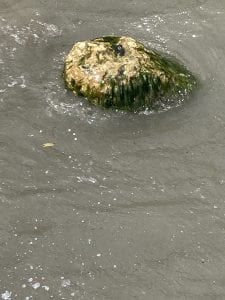Today we did our first two snorkeling expeditions. Before lunch, we snorkeled a patch of reef near the dock for about an hour, and after lunch we snorkeled a patch of reef on another side of the island. To get to the second location, we had to run through a mangrove forest infested with mosquitoes (not my favorite part of today!)
The first snorkel session was pretty uncomfortable for me. I have never been snorkeling before today, and the water was surprisingly cold! I struggled to catch my breath after the initial shock, and I found myself shivering by the end of the hour. Shivering! In the tropics! Who would have thought?
The second snorkel session was actually better for me, despite the mosquito-laden start. I felt a lot more in control of my breath, and I actually felt confident enough to dive down beneath the surface to get a closer look at the beautiful corals, sponges, and sea fans.
Sponge Species sighted today:
- Yellow Tube Sponge (Aplysina fistularis)
- Orange Icing Sponge (Mycale laevis)
- Branching Vase Sponge (Callyspongia vaginalis)
- Fire Sponge (Tedania ignis)


